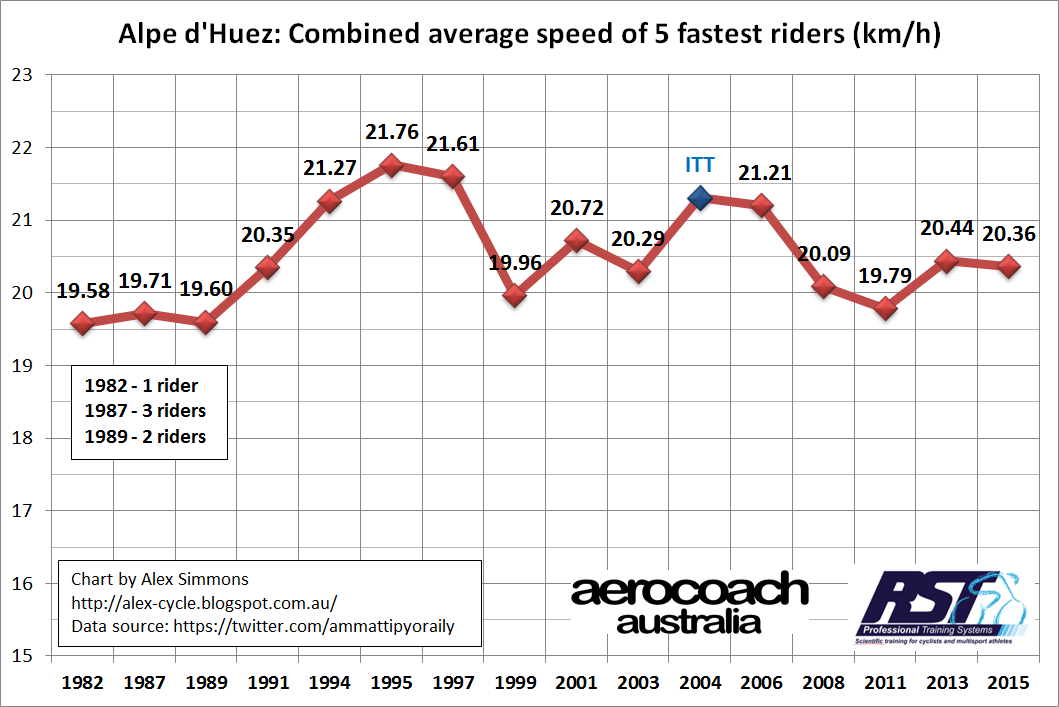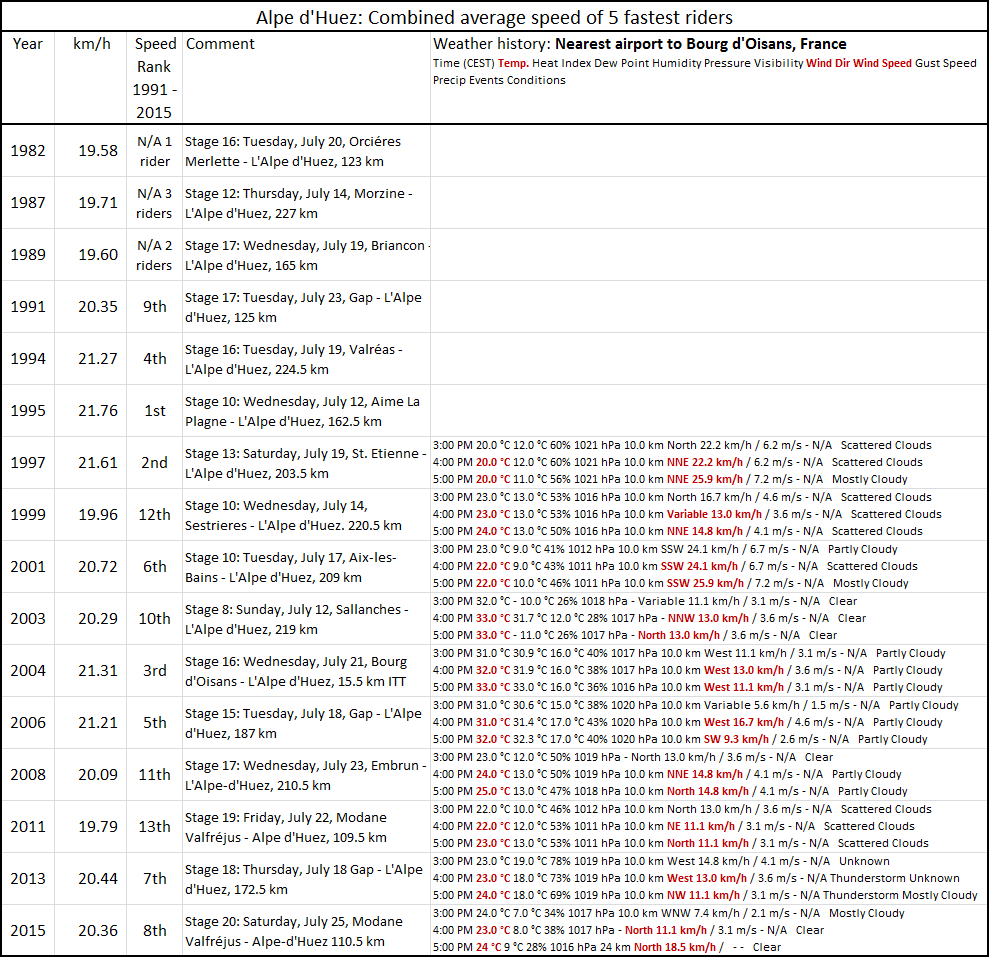- Mar 10, 2009
- 2,973
- 5
- 11,485
Re: Re:
What happens with wind strength variations, using, for instance, your 50% draft?
Thanks.Escarabajo said:The main variables that I change are weight, wind strength, drafting time, and sometimes a ply with the CDA as well. But the first three are the most important one. I didn't do it for this one, but for Froome's climb in PSM I get the following range:Alex Simmons/RST said:What range of outcomes do you get?Escarabajo said:I used my own in order to observe the range of possible outcomes.
What assumptions are you using?
% ---------W/Kg-------Watts
0%---------5.84-------386
10%-------6.01-------400
20%-------6.06-------404
30%-------6.11-------407
40%-------6.15-------410
50%-------6.19-------413
60%-------6.23-------416
70%-------6.26-------418
80%-------6.30-------421
90%-------6.36-------425
100%------6.54-------440
Absolute minimum is 5.84 w/kg.
Most likely scenario would be around the 50% which is 6.19 w/kg.
My weight rage was 65.5-68 kg. That should cover all possible outcomes.
What happens with wind strength variations, using, for instance, your 50% draft?








